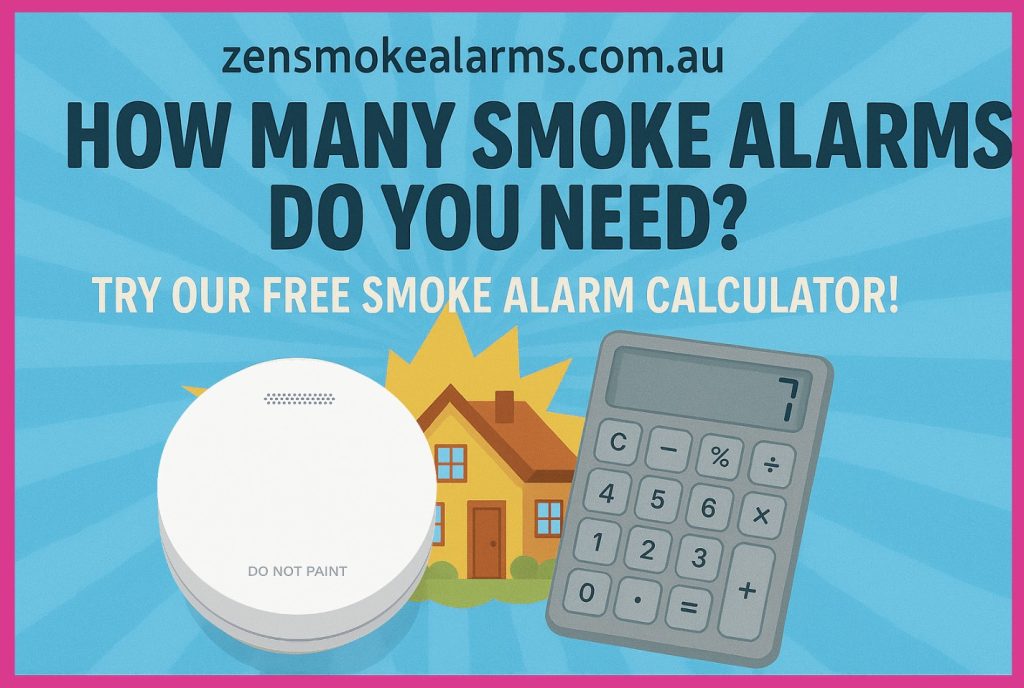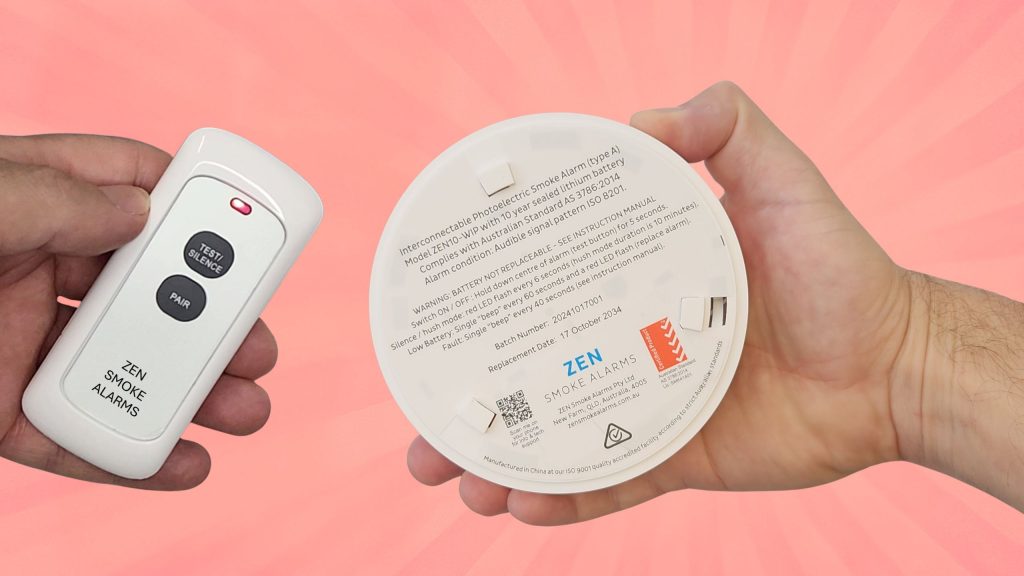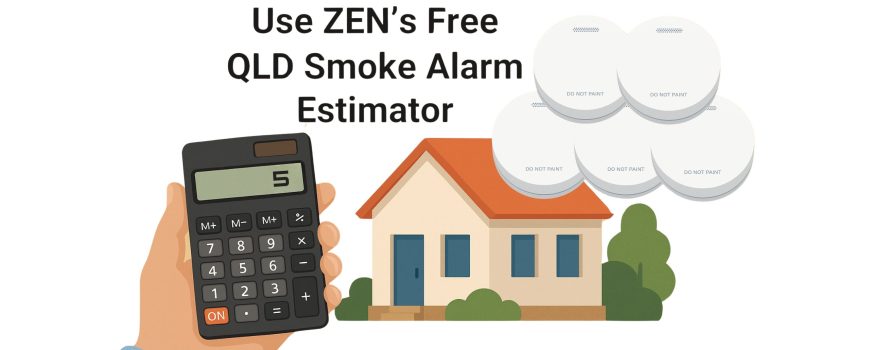If you’re living in Queensland, chances are you’ve heard about the new QLD smoke alarm legislation that’s rolling out in stages. By 2027, every residential property in the state will need to comply with strict new smoke alarm laws designed to keep Queenslanders safe in their homes.
But here’s the big question:
How many smoke alarms does your home actually need?
That’s where our free QLD Smoke Alarm Estimator comes in — a simple, fast, and 100% free online tool that helps you figure out exactly how many alarms your home needs based on the current legislation.
No email. No sign-up. No spam.
Just a quick, easy calculator that does the hard work for you.
Let’s break it all down so you know what’s required — and how ZEN Smoke Alarms is here to help.
🏠 Queensland’s Smoke Alarm Laws Are Changing (And It’s a Good Thing)
Smoke alarms save lives — we all know that. But not all alarms are created equal, and not all homes are up to date with current legislation.
In Queensland, the smoke alarm legislation has been undergoing major changes to improve fire safety for homeowners, renters, and tenants alike. By 1 January 2027, every Queensland home will need to have:
✅ Photoelectric smoke alarms (the safest and most reliable type)
✅ Smoke alarms that are less than 10 years old
✅ Hardwired or wireless interconnected alarms
✅ Alarms installed in every bedroom, hallways, and on each storey
This can be a bit overwhelming, especially if you’re not quite sure what qualifies as a hallway or how many alarms that really means for your specific home layout.
🧮 Introducing the QLD Smoke Alarm Estimator
Here at ZEN Smoke Alarms, we understand that interpreting legislation and calculating how many alarms your home needs can be confusing.
So, we created the QLD Smoke Alarm Estimator — a free online tool designed specifically for Queenslanders to make compliance easy and stress-free.
It only takes a minute or two.
Just answer a few quick questions like:
- How many storeys your home has
- How many bedrooms you’ve got
- Whether there are hallways outside the bedrooms
And bam! — the estimator tells you how many smoke alarms your home needs to be compliant with Queensland’s current and upcoming smoke alarm laws.
It’s like having a friendly smoke alarm expert in your pocket.

🔧 No Sign-Ups. No Hassle. Just Easy Information.
Unlike other online tools that ask for your name, email, or phone number before giving you the answer — our QLD Smoke Alarm Estimator is 100% free to use with zero strings attached.
✅ No sign-up
✅ No email required
✅ No annoying follow-up marketing
✅ No spam — ever
We’re here to help, not hassle. At ZEN, we believe the path to fire safety should be clear, simple, and accessible to every Queenslander.
🚨 Why It’s Important to Get It Right
Getting your QLD smoke alarm setup wrong doesn’t just risk your safety — it could mean non-compliance with Queensland legislation. That’s a problem if you’re:
- A homeowner planning to sell
- A landlord with investment properties
- A renter wanting to ensure your home is safe
- A property manager staying on top of compliance
And even if you’re none of the above — you’re still protecting your family and property. That peace of mind is priceless.
💡 Did You Know?
- Photoelectric alarms detect slow-smouldering fires better than ionisation alarms — giving you more time to get out safely.
- Interconnected alarms mean that when one goes off, they all go off — so no matter where the fire starts, you’ll hear it.
- Queensland smoke alarm laws are among the most progressive in the country — setting the standard for fire safety in Australian homes.
👨🔧 Let ZEN Smoke Alarms Help You Stay Compliant
Once you’ve used the QLD Smoke Alarm Estimator, you’ll know how many alarms you need. The next step? Getting the right ones, installed correctly.
That’s where we come in.
ZEN Smoke Alarms is proudly Australian-owned and based right here in Queensland. Our photoelectric smoke alarms are:
✅ Powered by a non-removable 10-year battery
✅ Interconnected wirelessly — no electrician needed
✅ Compliant with Australian Standard AS 3786:2014
✅ Easy self install in minutes
✅ Affordable and reliable
We even include a free remote control and free delivery with every ZEN Smoke Alarm bundle pack.
👋 Meet Christian — Real Help, No Robots
At ZEN, your support isn’t handled by offshore call centres or AI chatbots. When you contact us, you’ll speak to Christian — a real Queenslander and fire safety expert who genuinely wants to help.
With decades of safety experience — including time as a fire team member offshore and deep involvement in the certification of smoke alarms — Christian brings a personal, professional touch to every interaction.
🔍 Try the Estimator Today — It’s Free and Takes Just a Minute!
If you’re unsure whether your home meets QLD’s smoke alarm laws — or you just want to double-check — head over to our free QLD Smoke Alarm Estimator now.
No pressure. No obligation.
Just a free helpful tool made for Queenslanders, by Queenslanders.
👉 Click here to use the QLD Smoke Alarm Estimator now
✅ What You Get From Using the Estimator:
- Clarity on how many alarms you need
- Confidence that you’re on the right track with QLD law
- Peace of mind that your family and property are protected
- Freedom from spam, email sign-ups, or annoying ads
And best of all — it only takes a minute.
🎉 Ready to Upgrade Your Home’s Fire Safety?
Once you know how many alarms you need, ZEN can help you get set up with a fully compliant, easy-to-install smoke alarm bundle.
Our wireless, photoelectric alarms are trusted by thousands of Queenslanders — and we back them with outstanding support, fast shipping, and expert advice.
Don’t wait for the legislation deadline. Stay ahead. Stay safe.

🔗 Use the Free QLD Smoke Alarm Estimator Now
Whether you’re renovating, renting, buying, selling — or just being proactive — our QLD Smoke Alarm Estimator is the easiest way to stay fire-safe and legally compliant.
👉 Click here to try it out now.
ZEN Smoke Alarms — Trusted by Queenslanders. Powered by 10-Year Batteries. No Electrician Required.
Have questions or want help choosing the right bundle?
Christian’s here to help — no bots, just real answers.

Want to know more? Watch our ZEN Smoke Alarm YouTube channel or call us on 0478 596 402 today
We love talking smoke alarms!
ZEN Interconnected Smoke Alarms
New Farm, QLD, 4005




